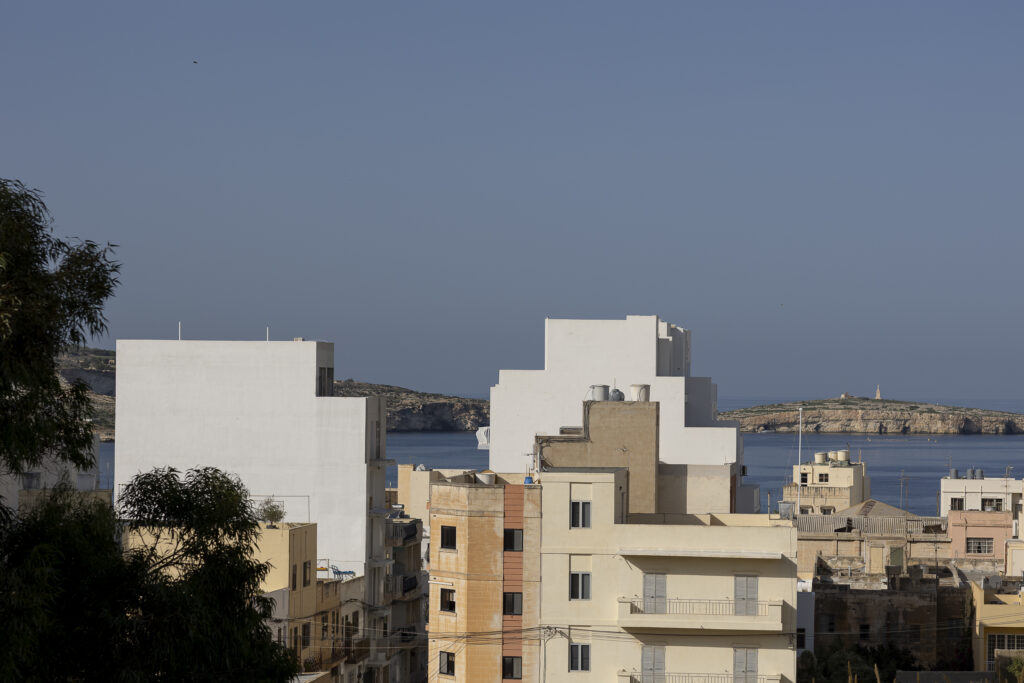We are watching our islands erode, silently and helplessly, while nostalgia takes us back to gentler days. We often reminisce about a time when life was slower, when buildings were born out of necessity. Back then churches stood proudly atop descending urban skylines. Towns and villages unfolded organically along contours of the land. Spaces were designed in response to the needs of the community – that was Architecture: the art of shaping space for positive and meaningful human experience.
Today, space is often reduced to a numeric value where floor area is seen as a figure imputed into a feasibility study. No wonder so many of us feel closer to a vernacular past than to the concrete present. And yet, whether by intention or neglect, our built environment continues to mirror who we are. More often than not, it reveals an identity dimmed by faded pride, propelled by profit before people, drifting without purpose. This is identity nonetheless.
Identity after all, stems from context and context changes as our culture evolves. Families are smaller. Life is faster. Climate pressures are rising. Our social and cultural values are in flux. These transformations demand a more thoughtful architectural response. One that sees built form not as static but as an evolving dialogue with the societies it serves.
“Architecture is not immune to cultural change; rather, it is uniquely placed to interpret and reflect it.”
At this crossroads, the architectural profession must take stock. The tools we inherited were forged in different times. Now, we must re-evaluate long-held assumptions in light of new global imperatives—climate resilience, demographic change, digital transformation, and a renewed call for spatial justice. And yet, in Malta, we remain largely a construction-obsessed nation, locked in a cycle of short-term gain. Our planning frameworks often favour quantity over quality. “Compliance” has too often become a convenient justification for exploiting sites to their limits, regardless of the environmental cost.
The result is a growing dissonance between people and place. Streets feel less like community spaces and more like corridors. We’ve lost not just buildings, but the memories and meanings they once held. This erosion of connection chips away at our collective identity and leaves us clinging to a romanticised past where buildings seemed to grow out of the land, rather than sit upon it.
“We’ve lost not just buildings, but the memories and meanings they once held.”
But dwelling on an idealised past will not repair the damage. We cannot rewind the clock. What we can—and must— do is recalibrate our mindset. We can begin by protecting what remains, through the sensitive scheduling of heritage and culturally significant buildings. We can heal the wounds not solely through reconstruction, but through considered adaptive and restorative interventions. We can embrace green design and sustainable materials, not as aesthetic preferences, but as ethical imperatives in the face of environmental crisis.
Most crucially, we must return to the core of architecture: the creation of spaces that honour both people and place. Spaces that are not only functional but soulful; not just occupied, but loved.
This transformation must begin with education. Future generations of architects, developers, and citizens alike need to believe—and be shown—that the built environment can be significantly better than the mediocrity we have too often accepted. Pride and profit need not be in conflict. When architecture respects its context, serves its community, and meets economic realities, it does more than house us—it dignifies us.
“let us build with humility and ambition—not for spreadsheets, not for tourists, not for political expediency”
So, when development is necessary, let us build with humility and ambition—not for spreadsheets, not for tourists, not for political expediency. Let us design with the intent to enrich our towns, to add beauty, coherence, and meaning. And when demolition becomes inevitable, let us replace what is lost with something better—not just newer. Let what rises stand as a symbol of who we aspire to be. Only then can we begin to rebuild—not merely our physical towns and cities, but the cultural and civic identity we so urgently need.
Not just architecture for its own sake, but the architecture we truly deserve.
Article kindly provided by Steve Risiott, Architect and Partner at A Collective, Valletta
This topic resonates with the content discussed at the recent Ħaġra Festival.
Images are from Therese Debono’s Blank Project with thanks.
